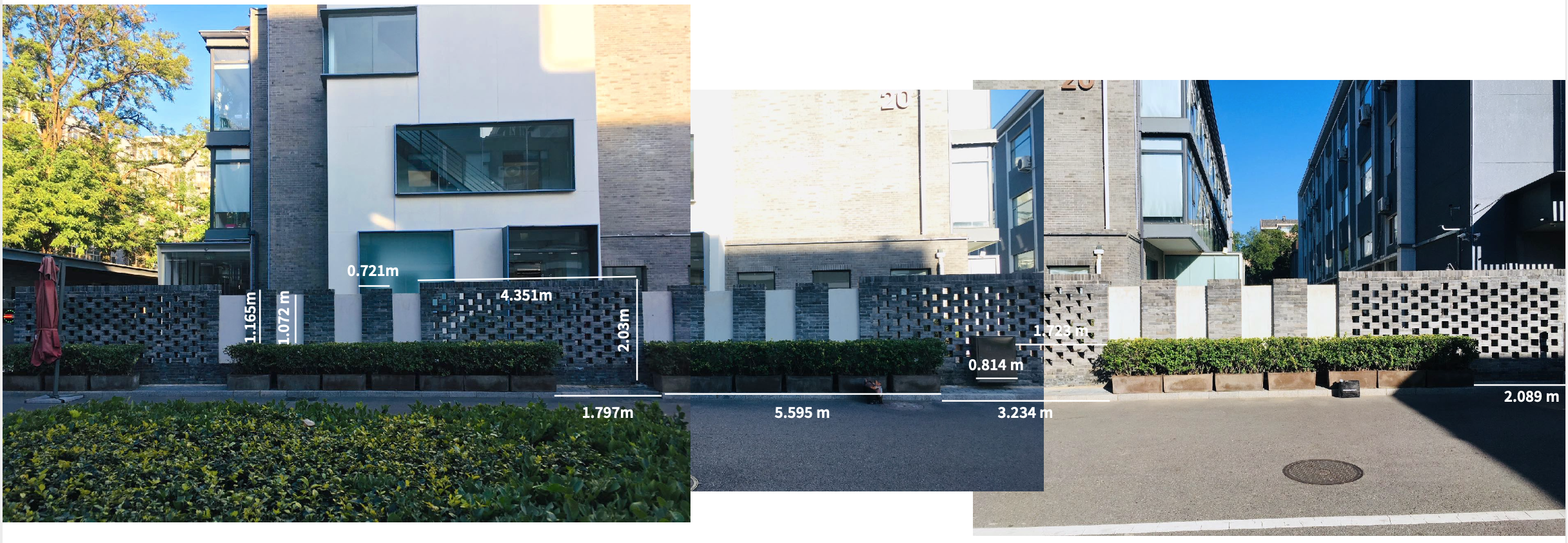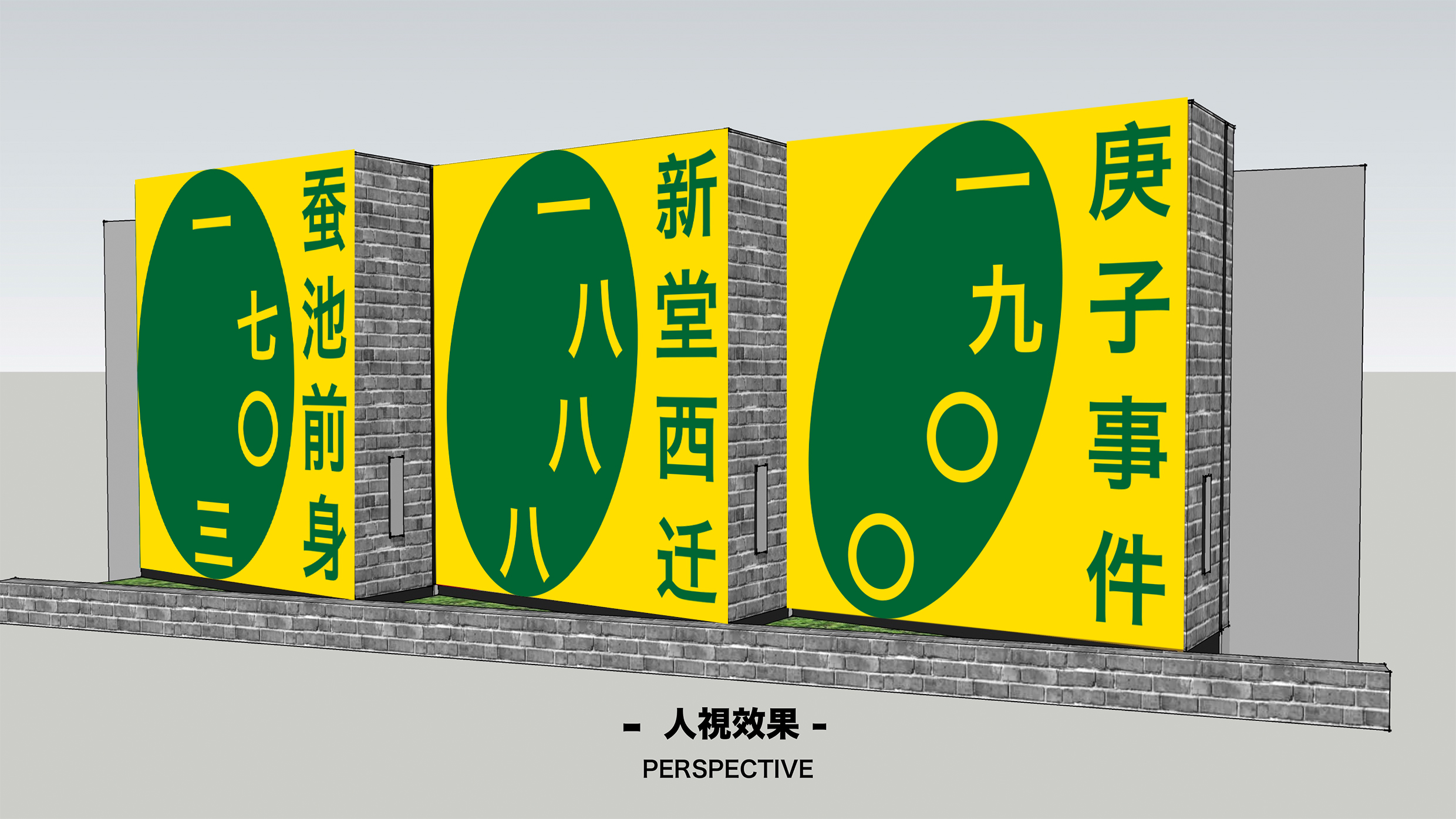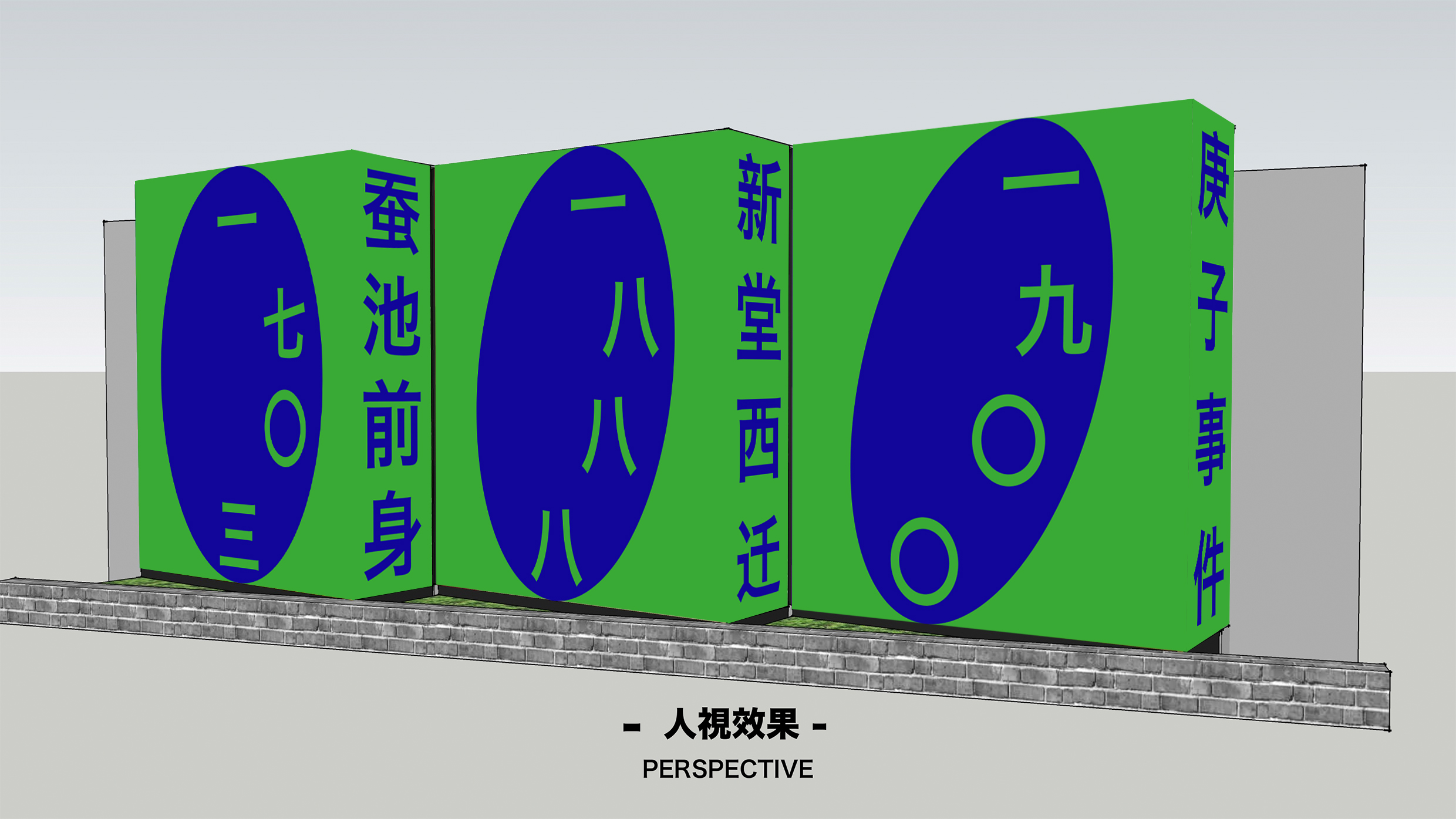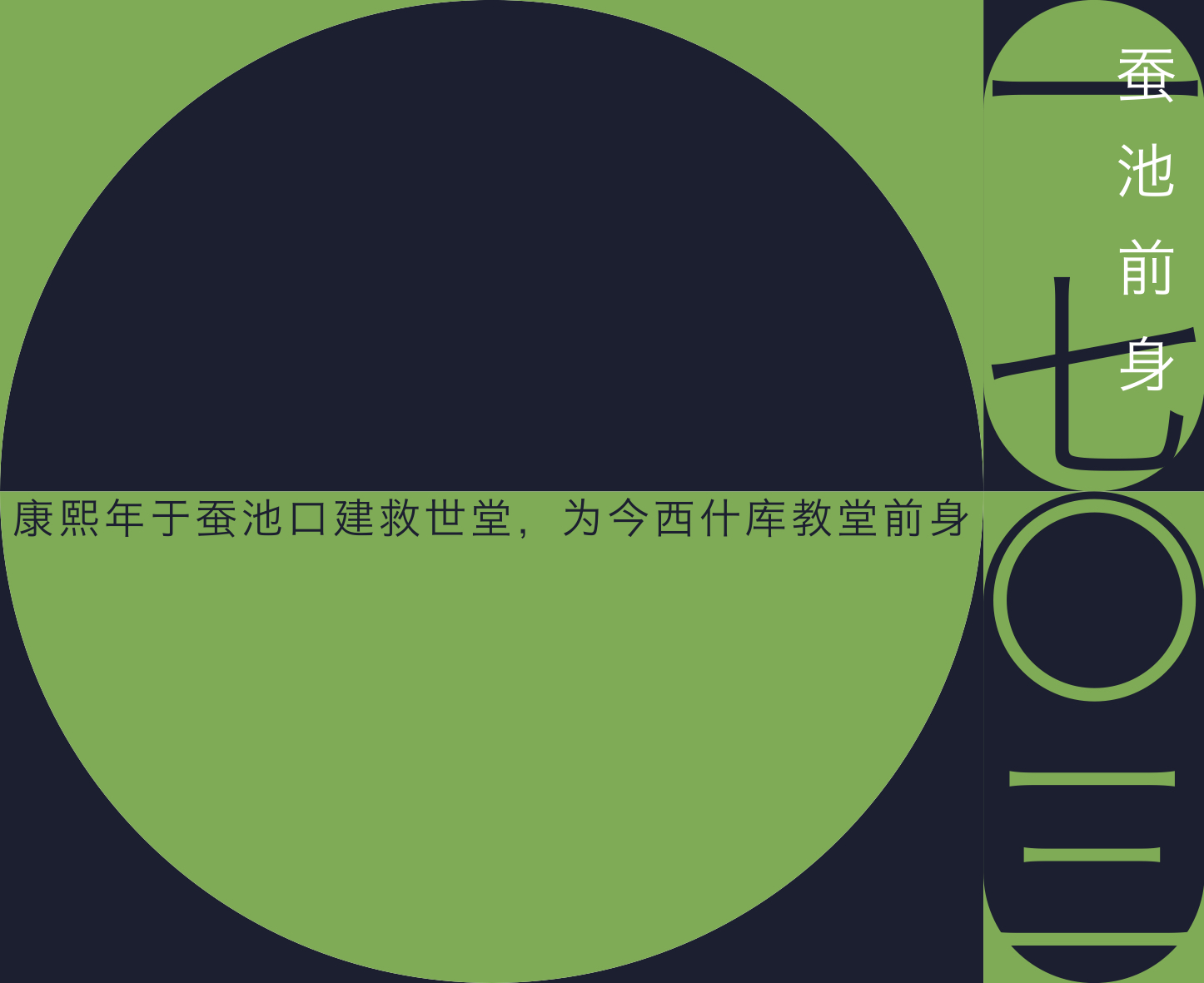Xishiku 31
Installation Design
wall mural
2019 - 2020
wall mural
2019 - 2020

Xishiku 31 is a cultural and industrial park in Beijing (China) for which we made a wall graphic. The park is uniquely situated in the middle of Beijing’s historical city and it connects a primary school with a church and an industrial work zone.
The government wanted to give this park a facelift because it used to have a very industrial image. The client wanted a slightly younger and more trendy graphic for a specific wall.
In the first weeks I did a lot of research into existing wall graphics and exterior materials. We then brainstormed, sketched an idea and pitched it to the client. He left us a lot of freedom in the beginning in terms of content but later on in the process it became clear that certain important historical events should be placed on the wall accompanied with more text.
The government wanted to give this park a facelift because it used to have a very industrial image. The client wanted a slightly younger and more trendy graphic for a specific wall.
In the first weeks I did a lot of research into existing wall graphics and exterior materials. We then brainstormed, sketched an idea and pitched it to the client. He left us a lot of freedom in the beginning in terms of content but later on in the process it became clear that certain important historical events should be placed on the wall accompanied with more text.

















In collaboration with Elke Scholiers (Meat, Beijing)
︎︎︎ Most important happenings of Xishiku, chronologically arranged :
1703 - Former Silkworm Pond
In forty-two years of Kangxi (the 4th Emperor of the Qing dynasty), two Catholic priests Hong Ruo and Liu Ying cured the Emperor Kangxi’s disease. They were given a generation of churches in Canchikou in the Xi'an gate of the imperial city. This church is the predecessor of today's Xishiku Church, called Salvation Church.
1888 - Xintang moves west
In the three years of Tongzhi (10th Emperor of the Qing dynasty), the high church bell tower caused dissatisfaction between Empress Dowager Cixi and Emperor Tongzhi due to the close proximity of Canchikou to the Royal Forbidden City. After negotiations, the Church agreed to move it to Xishiku. In the 14th year of Guangxu, the new church in Xishiku was officially completed.
1900 - The Gengzi Incident
The Boxer Uprising, the adherents' adherence and the coalition's siege were combined into The Gengzi Incident. After the reconciliation, the Qing government compensated and repaired the heavily damaged Xishiku church building, forming the current complex of Xishiku churches.
1900 - Small walnut courtyard
With the construction of the church in Xishiku and the gathering of the surrounding residents, the entire city of Xishiku has gradually formed a city style with a church as the core cultural development. The dwellings around the church are mostly regular courtyards, and walnut trees are planted in each courtyard. The unique style has lasted for nearly a hundred years.
1958 - Dedication
During the "Xian Tang Xian Xian" campaign, the church and surrounding land was turned over to the country. The church's collection of collections, early printed books in a variety of languages and a batch of rare documents, were transferred to the Beijing Library Collection.
1985 - Old church opened
The church was renovated with funding from the people's government, and normal religious activities resumed.